Information on the precincts and surrounding areas
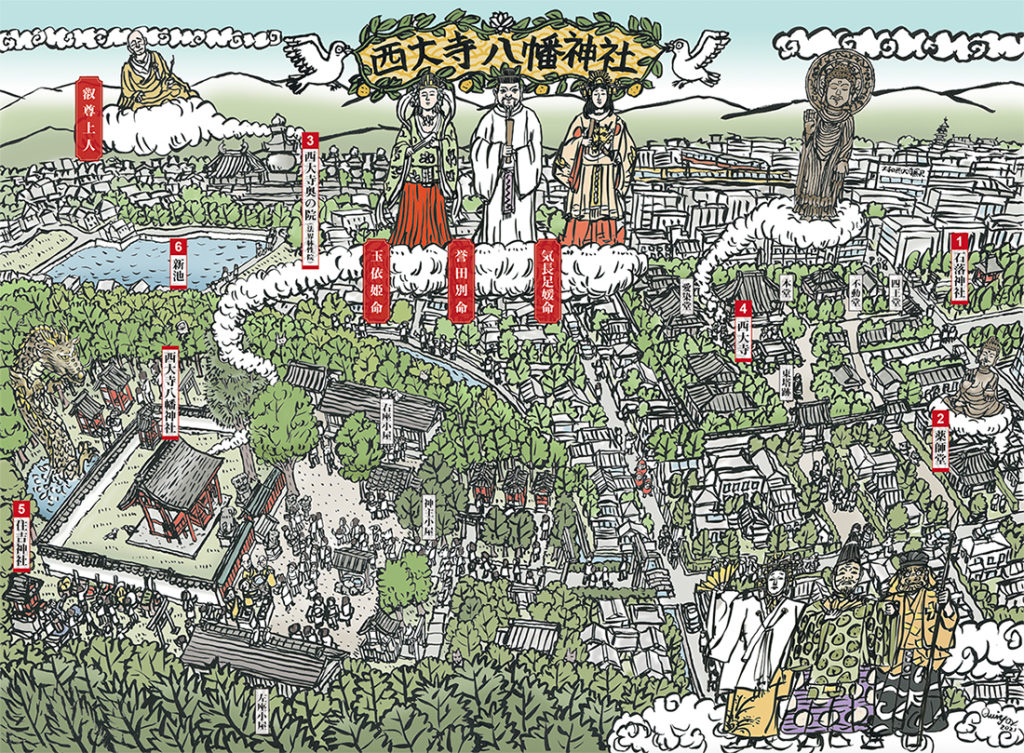
Saidaiji Hachiman Shrine
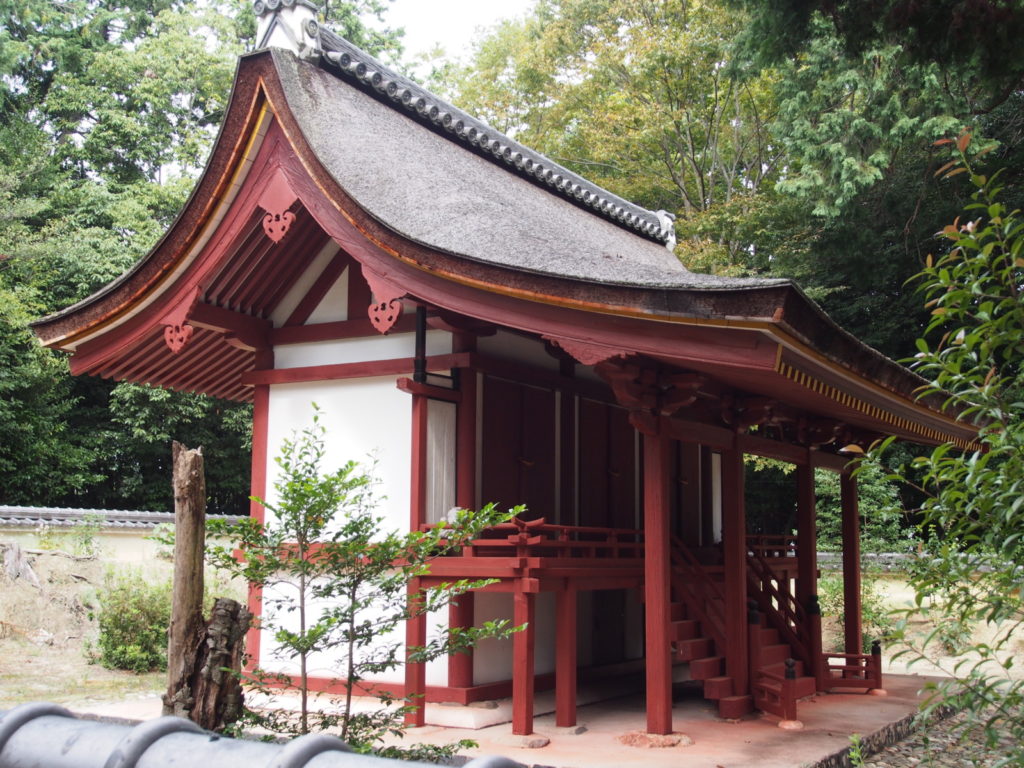
The main shrine of Sangensha Nagare-zukuri, which is designated as an important cultural property, was built in the middle of the Muromachi period. It is a rare space.
The main shrine building, which was built in the middle of the Muromachi period, has been designated as a national important cultural property, and is still beautifully maintained by renovation and conservation.
Enshrines “Okinagatarashi Hime no Mikoto” in the right hall,
(Homutawake no mikoto)” in the middle hall, and ” Tamayorihime no mikoto ” in the left hall.
be doing.
Second torii
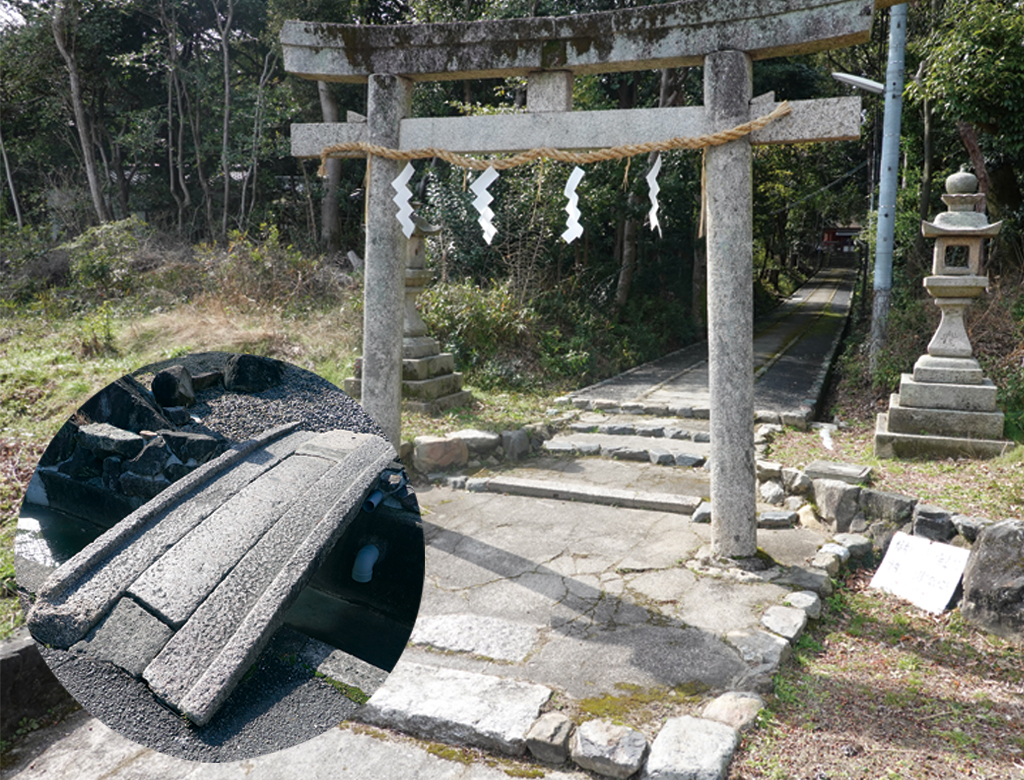
There are two torii gates on the approach road, and the second torii gate is considered to be the oldest building at Saidaiji Hachiman Shrine, along with a granite integrated stone bridge that straddles a stream from New pond.
Left seat and right seat
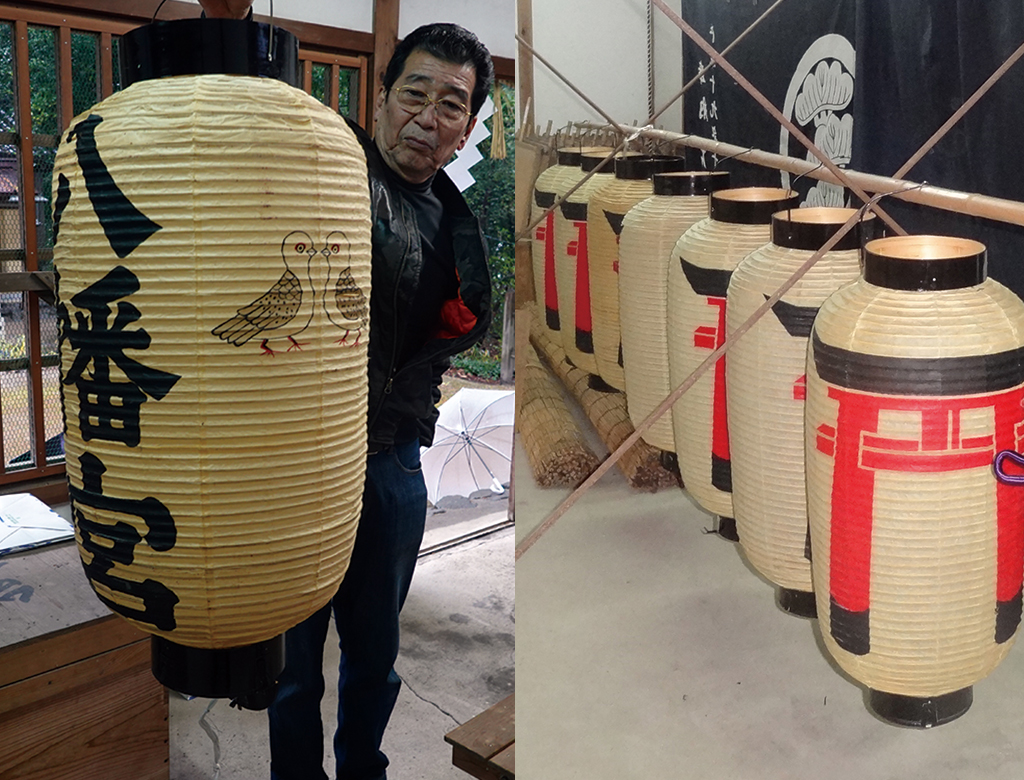
At Saidaiji Hachiman Shrine, the left seat (Anza) and the right seat (Oza) organized by the parishioners Alternately carry the ujikokannusi, with Otona and tyuuza playing a central role Annual events such as Atagoyama pilgrimage and lantern patrols Without losing the culture of chinjugami, such as ritual management and cleaning management We are working on inheritance.
The left-seat hut and the right-seat hut are originally on the left and right when viewed from the shrine, but at our shrine, the left and right sides have been reversed.
The reason for the change and the time of the change are unknown.
At our shrine, the crests drawn on the lanterns are different for the left and right seats, with the left seat being “dove” and the right seat being “torii”.
I don’t know why.
Sumiyoshi Shrine
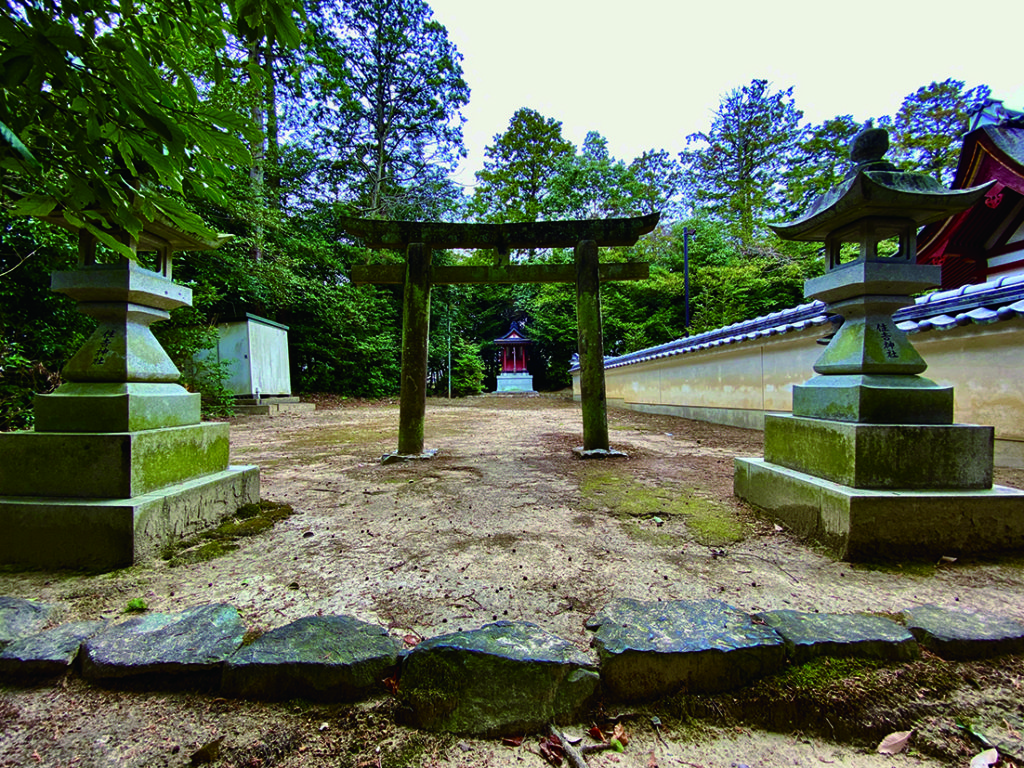
It is a shrine that sits to the south of the main shrine wall of Saidaiji Hachiman Shrine.
Details are unknown.
In the past, it was customary to donate a good harvest from each house in Shibakaito on the last Sunday of July at noon, and then bring back the offerings drawn by lottery and eat them.
The men brought a treat under the shade of Ajiro in front of the shrine and held a social gathering.
This custom was the only one in Nara, but it is now gone.
Syakuochi Shrine
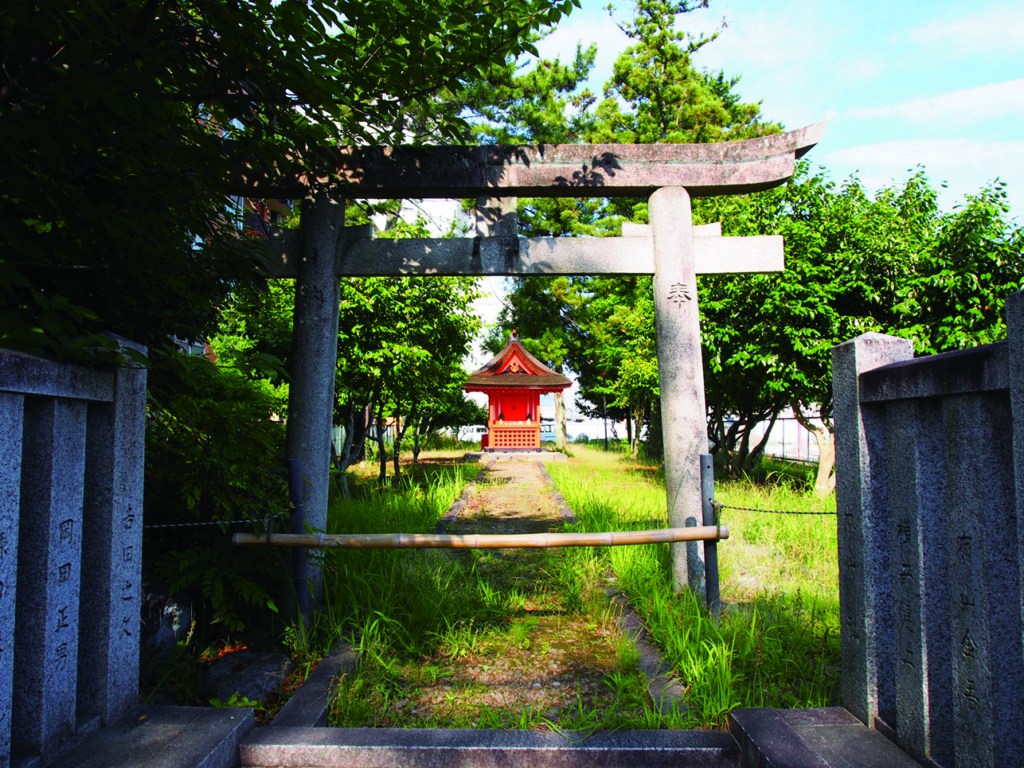
Syakuochi Shrine is enshrined in the excelave precincts in front of the east gate of Saidaiji Temple and enshrines the Syakuochi god.
The shrine is a building from the Muromachi period.
Ichikensha Kasuga-zukuri is a small medieval shrine with a vermilion-painted stile roof and a spectacle shelf.
・Main shrine (important cultural property designated by Nara City)
Yakushido
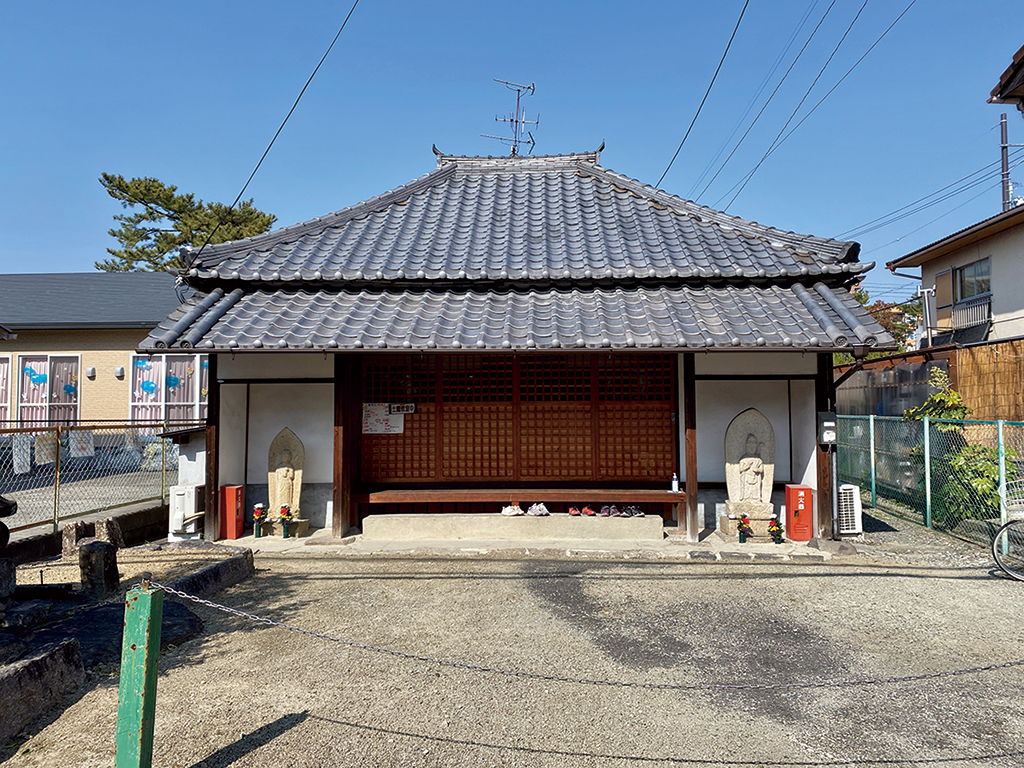
There are stone Buddhas on the left and right of the front of the temple, the Kannon statue on the right and the eleven-faced Kannon stone Buddha on the left, both from the Edo period.
The main idol, Yakushi Nyorai, who sits in the hall, is a parquet and lacquer foil sitting statue with a height of 67 cm and is said to be from the Muromachi period.
Atago-sha is enshrined on the left side platform, and Hachiman God is enshrined on the right side platform.
Every year, nengyouji four people in Shibakaito visit ” Atago Shrine “, receive amulets and return home, and there is a tradition of “”Atagoyama pilgrimage” pilgrimage” to distribute this to each house.
Dou was transferred from Saidaiji Temple and is said to have been relocated in 1883 (Meiji 16), and is currently used as a meeting place in Shibakaito.
New pond
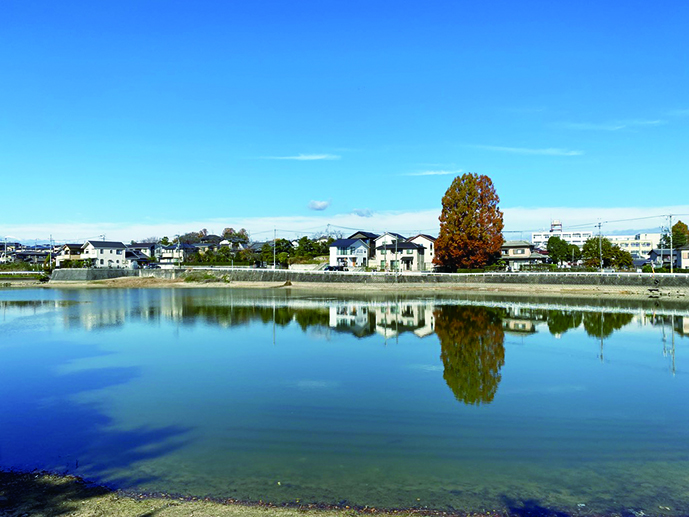
It is a pond made by donations from villagers, and two old and new ponds are connected, and it has many functions such as ecosystem maintenance, heavy rain disaster prevention, view and landscape.
The road from the road on the north side of Hachiman Shrine to Saidaiji Okunoin via the embankment of new pond is also a hidden historical highway, and especially from the embankment, you can see Mt. Wakakusa and it is also a shooting spot for mountain burning.
Saidaiji Temple
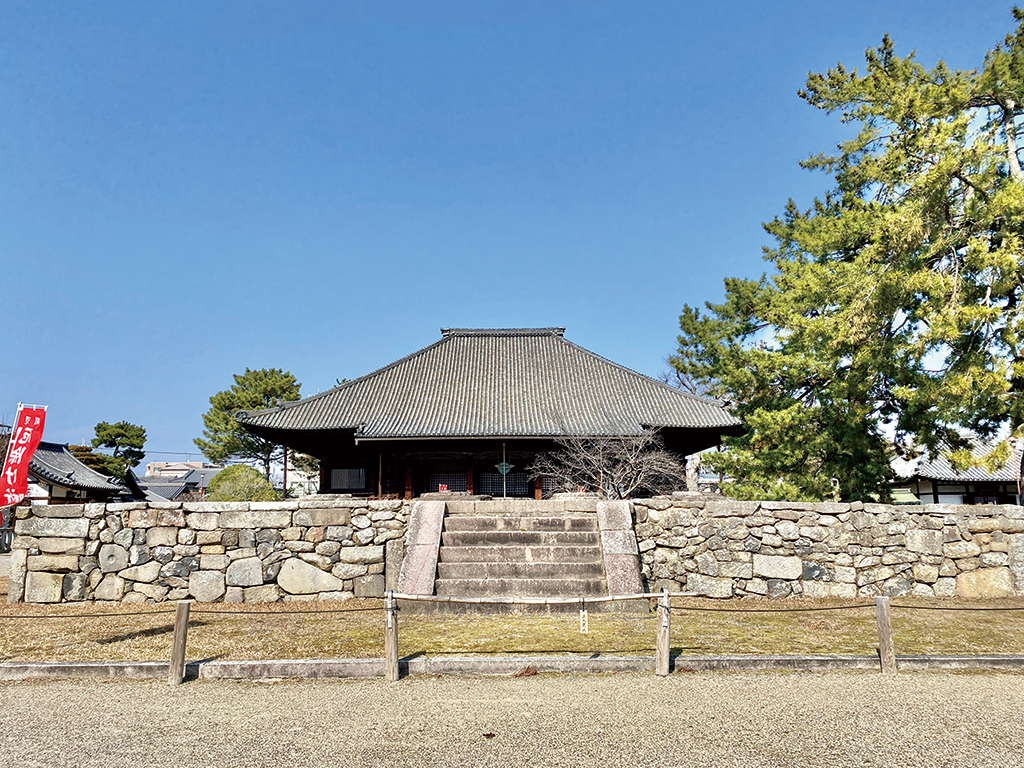
Saidaiji Temple A temple at the head temple of Shingon Risshu.
The mountain number is syouhouzan.
One of the seven major temples in Nanto.
The principal image is Shaka Nyorai.
Empress Koken for the guardian state Beginning with the application for the construction of the statue of the four heavenly kings, Built the following year.
At the time of its foundation, it boasted a five-storied pagoda with a height of about 45 m in the east and west and a magnificent cathedral that counts more than 100 Hall building .
It was named side by side in the east and west because Emperor Shomu requested it.
During the Heian period, most of the temples were destroyed by repeated fires, In the Kamakura period, it was reborn as the fundamental dojo of the Shingon ritual of secret and Ritsusoshu, thanks to the efforts of Eison Shonin (Kosho Bosatsu Eison Shonin), who is considered to be the ancestor of Saidaiji Temple.
In this way, Saidaiji Temple, which has the tradition of ancient temples and medieval temples, conveys the eternal history and traditions of more than 1250 years to the present.
It is a temple that represents the ancient city of Nara
The precincts are designated as a national historic site, and the hand-planted and linden trees of Eison’s superiors are left behind.
The Nara period Copying sutras, such as the Konkoumyousaisyouou Sutra, which is a national treasure, and the Daibirusyanajyoubutujinpenkaji Sutra, are It conveys the majesty of its founding.
In addition, the statue of Eison, a national treasure, the statue of Shaka Nyorai, Eison Sitting statue of the principal idol, the statue of Aizen Myoou, the secret Buddha of Nakaguro, Eison Sitting statue (Kosho Bosatsu ), the statue of Manjushri Bodhisattva lion statue and the yojisya statues, as well as the statues of the four Buddhas of Touhon and the statue of kissyouten .
, Buddhist statues such as the eleven-faced Kannon statue,
Buddhist paintings and portraits such as the twelve heavenly images of national treasures, kondouhoutou and tetuhoutou
,kondousukasiborisyaritou and many temple treasures such as esoteric Buddhist tools It is a large temple where people who visit the temple are constantly visiting.
Saidaiji Main Hall
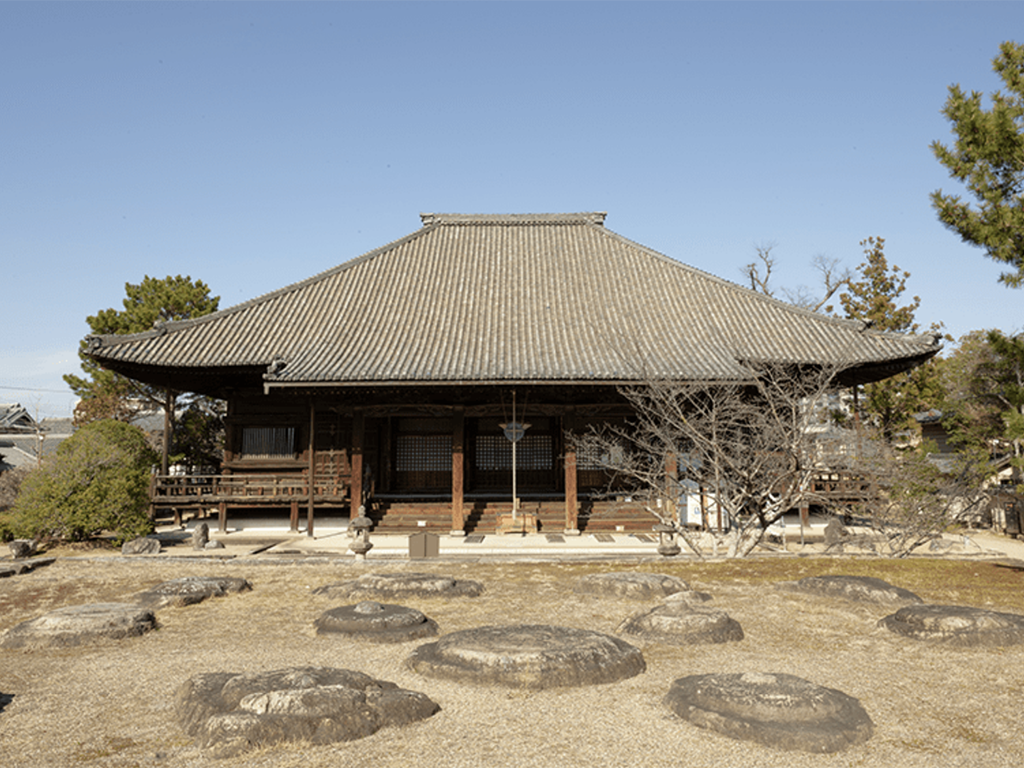
The current central hall of Saidaiji Temple.
Originally the successor to the Komyo Shingon-do, which was built to the north of the east tower in the Kamakura period, it was completed during the Kansei period in the middle of the Edo period.
It is a single hipped roof with seven girders and five girders.
There are three worship rooms on the front and back.
The hall separates the outer and inner camps from the south, east, and west, with a Sumidan in the center of the north of the inner camp and a wakidan in the east and west.
It is one of the largest and most excellent modern Buddhist temples in Nara City, which was found in the middle of the Edo period and uses a unique architectural technique that does not use clay walls.
In October, the main hall will be specially magnificent and the Komyo Shingoe will be held.
・Honzon Shaka Nyorai statue (important cultural property)
・Manjushri Bodhisattva lion statue (important cultural property)
・Yozisyazou (important cultural property)
・Miroku Bosatsu sitting statue (important cultural property designated by Nara Prefecture)
Aizendo
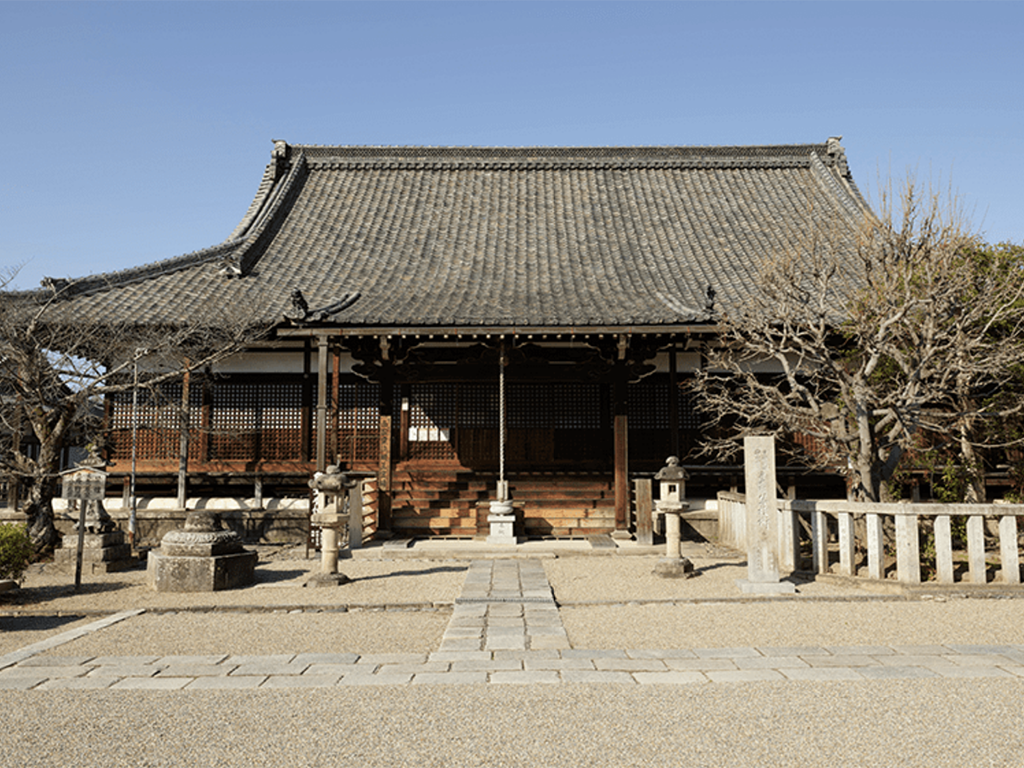
Southwest of the main hall, east tower base Built facing east in the west position, Irimoya-zukuri Sangawarabuki Kouhaituki With worship Large Buddhist temple.
It was relocated and erected on the site of Nishimuro, the residence of Eison Shonin in 1767 with the donation of the palace of the Konoe family residence in Kyoto during the Edo period.
The interior is divided into three sections, the north side is the guest hall (with barrier paintings and fusuma paintings inside), the center is the inner camp (Enshrines the secret Buddha Aizen Myoo in the central Sumidan), and the south side is the mortuary tablet (Otamaya, Enshrine the mortuary tablets of successive ancestors).
Currently, the statue of Kosho Bosatsu is also enshrined in the center).
It is a unique large and small buildings with a Buddhist temple that looks like a Shinden-zukuri style Kuge Mansion .
・Kosho Bosatsu statue (national treasure)
・Aizen Myoo sitting statue (important cultural property)
・literally , black lacquer colored flower-shape large stage ) (important cultural property)
East tower ruins
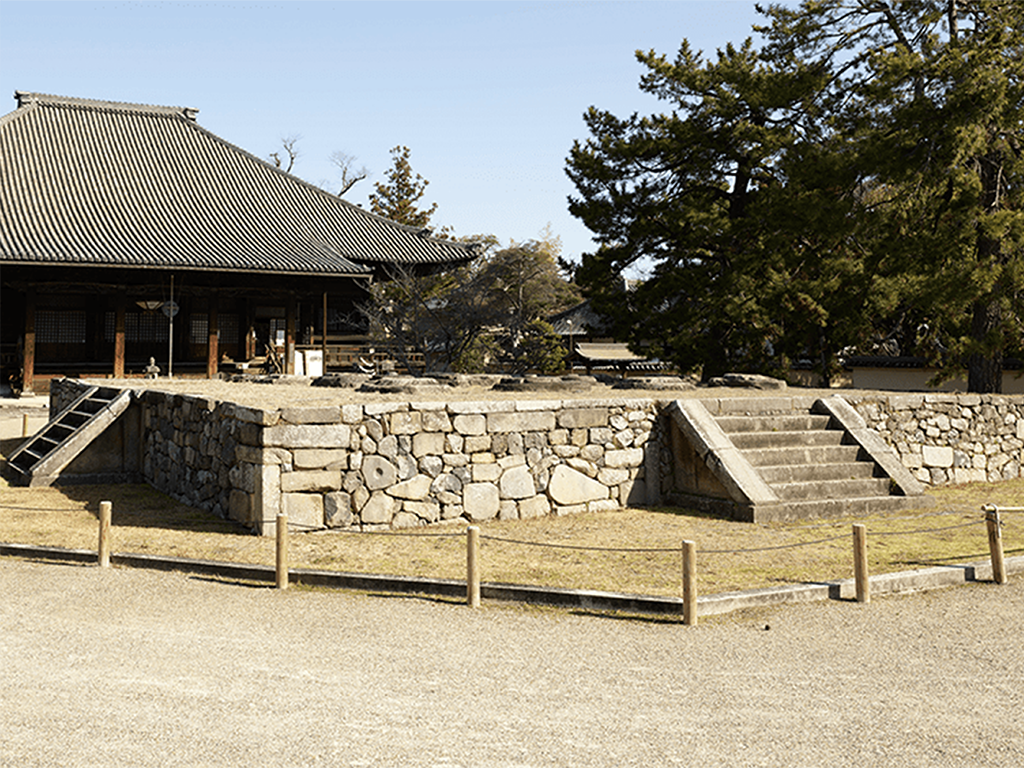
The east and west towers of Saidaiji Temple were originally designed as octagonal seven-storied pagoda, but were reduced due to austerity at the end of the Nara period, and were actually built as square five-storied pagoda.
It is said that one of the two towers was destroyed by a thunderstorm in the 6th year of extension (928).
After that, it was probably the east tower that was rebuilt in the late Heian period and the pagoda memorial service was held in the Kamakura period. The east tower was also burnt down in 1502, and after that, only the remains of the tower remain without being rebuilt.
An excavation survey in 1956 revealed that an octagonal digging ground was carried out around the tower ruins, supporting the tradition of the original octagonal tower (currently surrounded by octagonal butterbur stones).
Fudodo
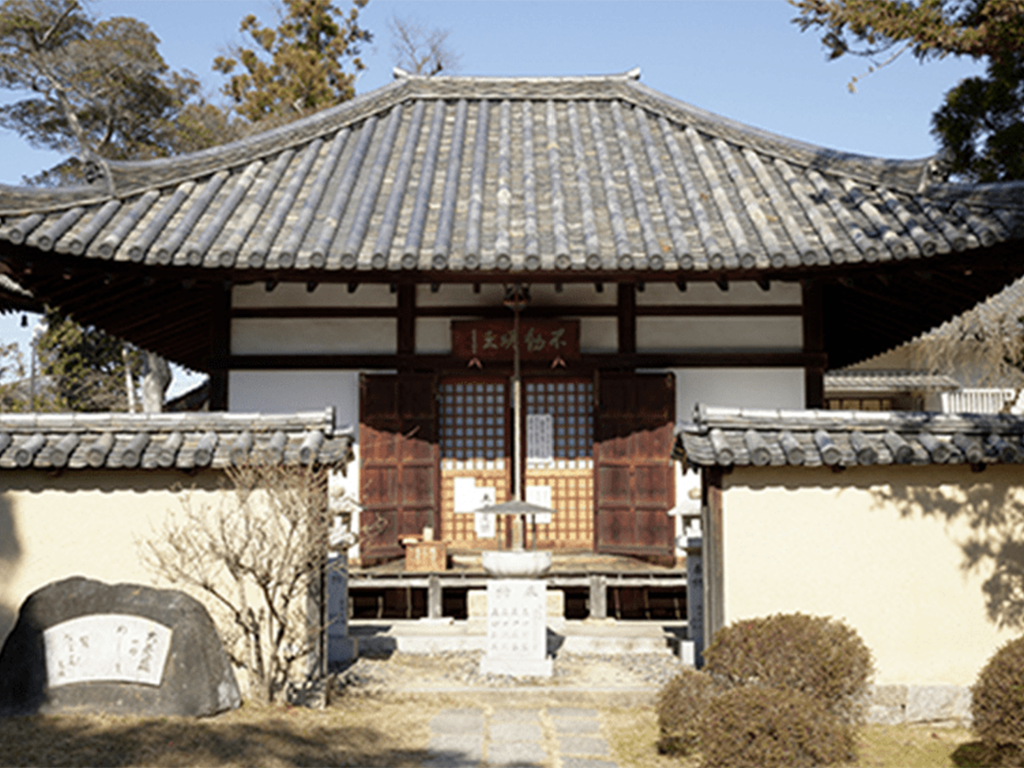
It was erected around the end of the Kanei era (1643).
Yosemune -tukuri hou-Sangendo.
Enshrining Fudo Myoo, made by Hozan Tankai,
A prayer for Homa is held on the 28th of every month to enshrine
Originally located on the south side of Aizendo,
it was relocated to its current location in 1979 (Showa 54).
A cultural property designated by Nara City.
Shio-do (Kannon-do)
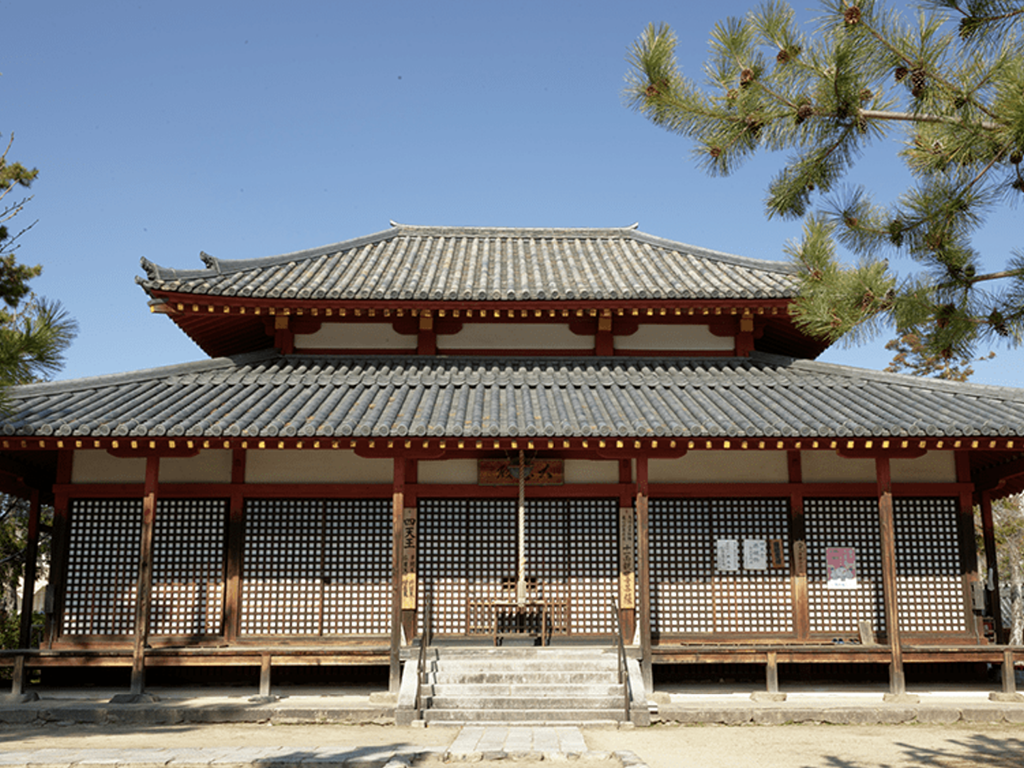
It is a Buddhist temple that enshrines the statue of the four heavenly kings who vowed to be the Emperor Shoutoku which was the beginning of the founding of Saidaiji Temple.
The large and small buildings current building was rebuilt in the 2nd year of Enho (1674) during the Edo period.
A hipped roof with 3 fronts and 2 depths, and a Mokoshi on the four laps of the haze.
The exterior is a double-style architecture, The Rammed earth foundation around the building It conveys the scale of the Nara period when it was first built.
In the 2nd year of Shoan (1289) during the Kamakura period, the main image of the 11-faced Kannon statue of the Kyoto Shirakawa 11-faced temple, which was the temple of Emperor Toba Goganji Temple at Kameyama Emperor Emeritus, was moved to the temple as a guest Buddha main image.
Also known as Kannon-do.
The statue of the four heavenly kings is also a reconstruction of posterity, but the evil demon at its feet conveys its original appearance during the Nara period.
・ Eleven-faced Kannon statue (important cultural property)
・ Four Tenno statues and evil spirits (important cultural property)
Saidaiji Okunoin
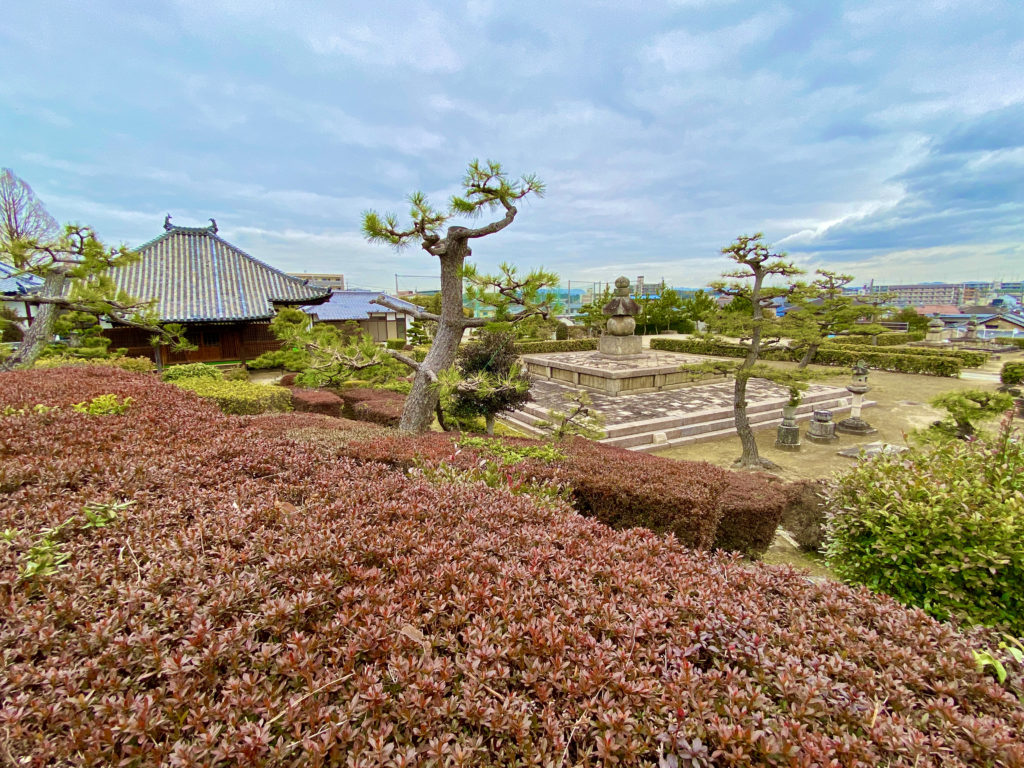
The taxtuchuu of Saidaiji Temple. It is included in the designation of the historic site in the precincts of Saidaiji Temple in the country.
In front of the gate, there is Japan’s largest Gorinto stone pagoda, which stands on a double-base platform with a total height of 3.42 m, which is said to be the tomb of Eison, the founder of Saidaiji Temple (built in the middle of Kamakura).
The statue of Jizo Bodhisattva, the principal idol, is said to be from the Muromachi period.
On the west side of the precincts, there is a garden that makes the most of the slopes, and the Especially the landscape at dusk is superb.
・Kosho Bosatsu Eison Gorinto (Important Cultural Property designated by Nara Prefecture)

